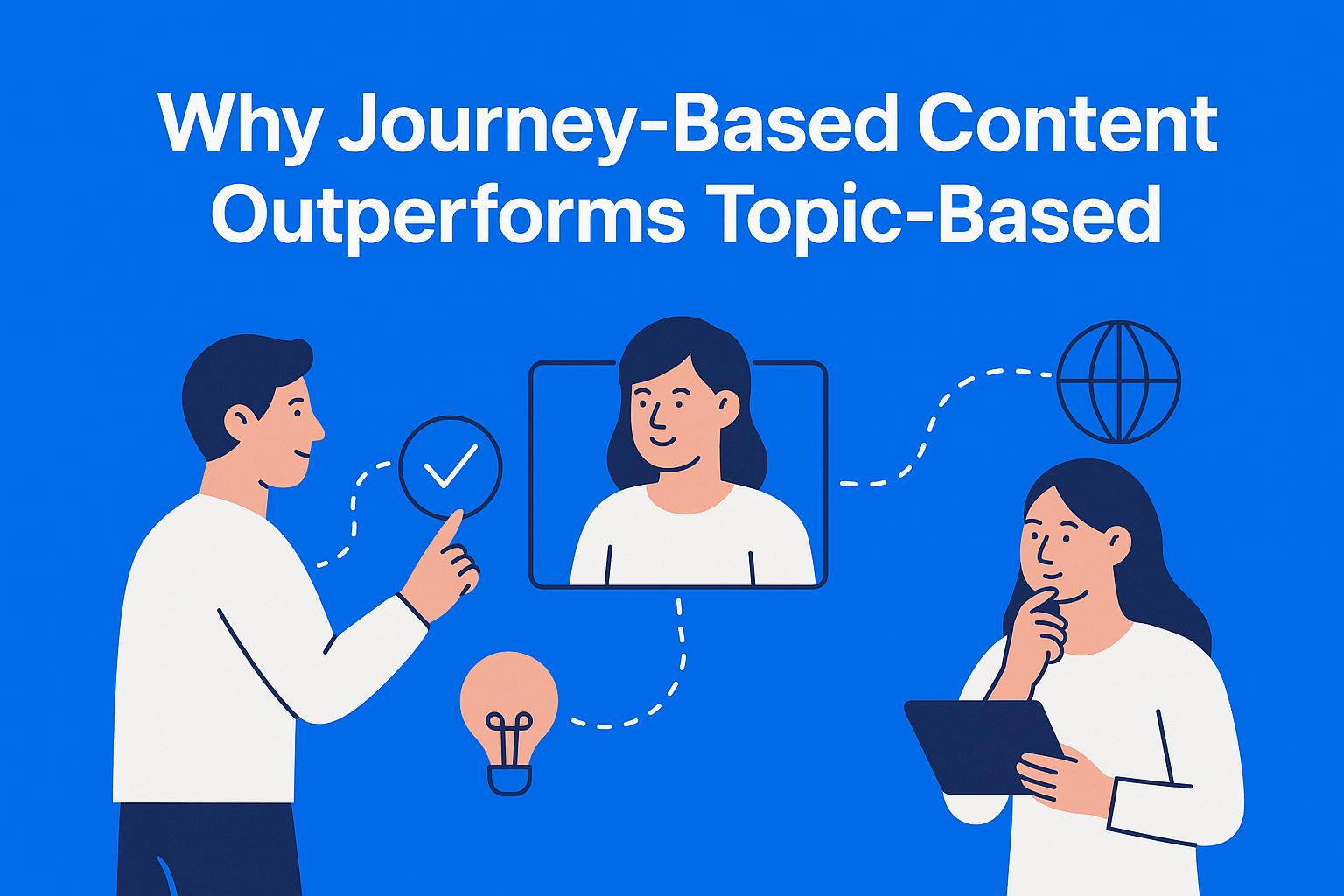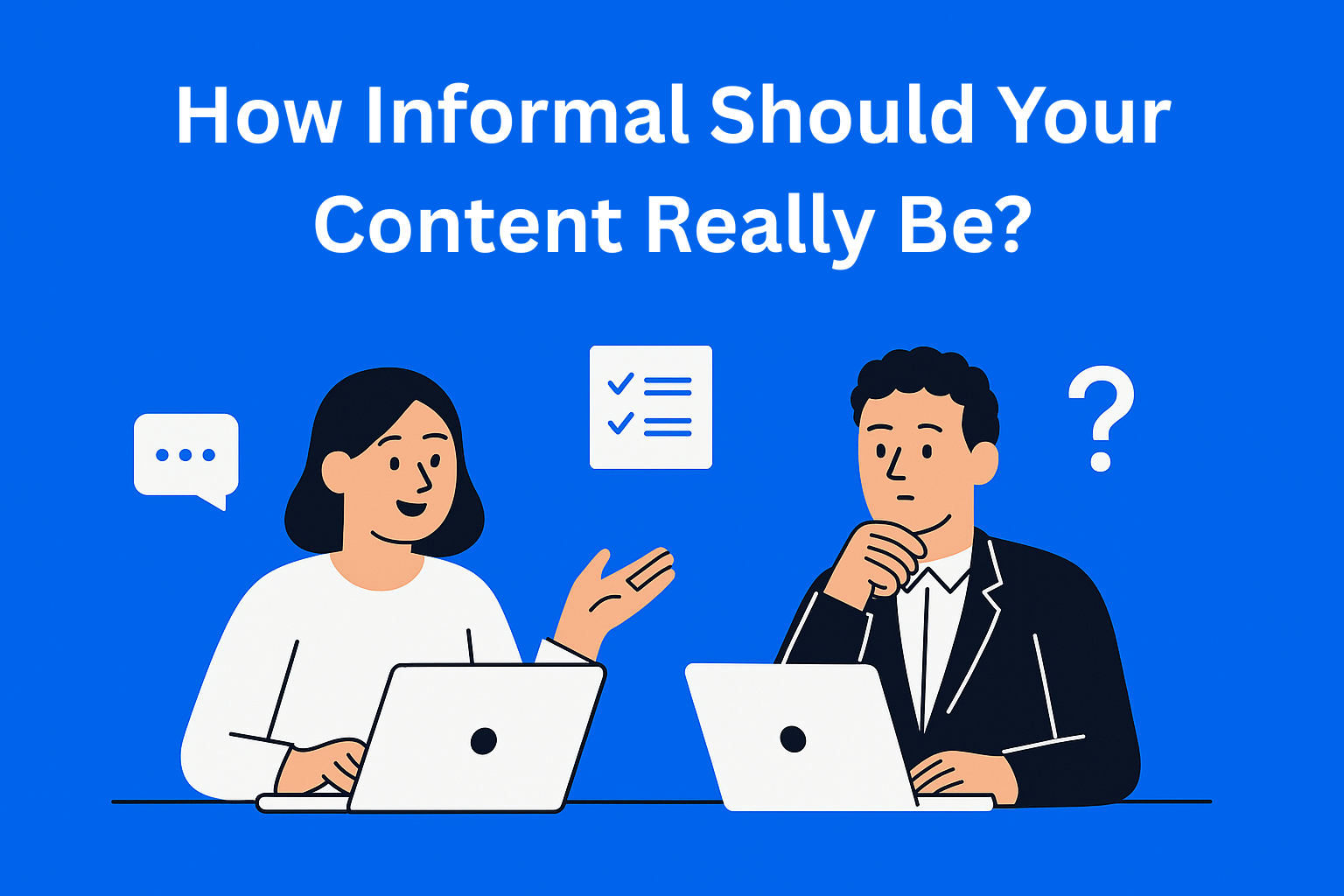Why “Journey-Based” Content Works Better Than Topic-Based Content
Learn why journey-based content outperforms topic-based content. Discover how guiding your audience through each stage of their journey builds engagement, trust, and smoother conversions for a stronger, more connected brand experience

Most teams still create content around topics. They have a posting plan with titles like “SEO Trends” or “How to Increase Sales.” It all looks organized, but there’s a problem: the audience doesn’t care. People don’t think in topics; they think about their own needs and questions. When they have a problem, they don’t say, “Today I’ll read about marketing,” but rather, “How can I attract more customers?”
That’s why journey-based content exists - content that isn’t about what the brand wants to say, but about what the audience needs to hear at a specific moment.
When you create content that follows your audience’s journey, you’re not just writing articles and making videos. You’re creating an experience that helps people step by step - from the moment they first hear about your brand to the moment they become loyal customers. That’s why journey-based content works better than the traditional topic-based approach.
Key Takeaways
- Topics ≠ Intent - Most people don’t search by topic, they search based on their specific need or question in the moment.
- Journey-based content follows the user path - It aligns with the buyer’s journey: awareness, consideration, decision, and post-purchase.
- Better engagement and trust - Content tailored to each stage builds deeper emotional connection and long-term brand credibility.
- Improved conversions - Strategic content placement ensures readers get the right message at the right time, moving them forward naturally.
- From publisher to guide - Shifting from “what should we write about?” to “how can we help right now?” makes your brand more human and more effective.
1. The Difference Between “Topic-Based” and “Journey-Based” Content
Topic-based content is what most brands still use. The focus is on topics and keywords. The goal is to rank on Google and attract traffic. That’s not bad (SEO matters), but this kind of content often doesn’t connect with people.
For example, you might publish an article titled “Top 10 Marketing Strategies” that attracts many visitors. But if those visitors don’t see how it helps their specific situation, they’ll leave. The topic is there, but the journey is missing.
On the other hand, journey-based content starts with the question: “Where is my audience right now, and what do they need?” If they’re just starting, they need content that explains the basics. If they’re deciding, they need comparisons, proof, and recommendations. If they’ve already made a purchase, they need support and extra value.
When your content follows these stages, it becomes natural, helpful, and connected. Instead of publishing random marketing articles, you now guide your audience through the process, step by step.
2. Why the “Journey-Based” Approach Delivers Better Results
a) Higher Engagement
People today have endless choices. If your content doesn’t give them what they need when they need it, they’ll move on. Journey-based content keeps their attention because it’s relevant.
When someone searches “How to Start an Online Business” and finds your article that clearly explains the first steps, they’ll come back. Later, when they search “Best Tools for E-commerce,” they’ll click your brand again because you’ve already helped them.
This builds trust over time. People start seeing you as a guide, not just someone publishing articles for SEO.
b) Smoother Conversions
Every stage of the journey has a purpose. In the awareness stage, the goal is to attract attention. In the consideration stage, it’s to provide proof and help with decision-making. In the decision stage, it’s to encourage action.
When your content follows these stages, the reader moves forward naturally. They don’t feel like you’re selling to them - you’re guiding them through the decision process. This leads to smoother and faster conversions because each piece of information comes at the right time.
c) A More Connected Brand
People don’t remember every article they read. They remember the feeling they had while reading it. If your content shows understanding, empathy, and consistency, your brand becomes known for its experience, not just information.
Journey-based content helps you build that emotional connection. Your audience knows that reading your content always makes sense because it follows their path - and you’re there to guide them along the way.
3. How to Shift from “Topic-Based” to “Journey-Based” Strategy
a) Map Your Audience’s Journey
The first step is to understand your audience’s journey. A typical buyer’s journey looks like this:
- Awareness - they realize they have a problem or need.
- Consideration - they research possible solutions.
- Decision - they decide who to choose.
- Post-purchase - they seek support and added value.
For each stage, ask yourself: What questions does my audience have right now?
For example, if you sell online courses:
- In the awareness stage: “Can I learn design on my own?”
- In the consideration stage: “What’s the best online course for beginners?”
- In the decision stage: “Is this course really worth the money?”
Answer these questions through your content, and you’re already halfway there.
b) Link Existing Content to Each Stage
If you already have a lot of content, do a content audit. Review every post and determine which stage it fits into. You might find you have too many beginner (awareness) articles and not enough that help with decisions.
That tells you what to add. For instance, if you have a guide like “How to Create Your First Website,” you could add a follow-up article like “How to Choose the Right Hosting for Your First Website.”
c) Plan Your Calendar Around the Journey, Not Topics
Instead of writing 10 articles on the same topic, think about the journey.
For example, if you’re a marketing brand:
- Awareness: “How to Create Your First Marketing Plan”
- Consideration: “SEO or Social Media - Which Brings Better Results?”
- Decision: “Why Our Marketing Course Is the Right Choice for Your Business”
This approach connects all your content into one logical flow, where each piece leads to the next.
4. Example in Practice
Imagine you run a platform like EasyContent that helps teams organize and improve their content workflow. Here’s how your site content could follow the four journey stages:
Stage 1 - Awareness:
A blog like “The Death of ‘Ad Hoc’ Content Creation” attracts people who are just realizing their workflow lacks structure. It shows the problem that disorganized work slows down creativity and productivity.
Stage 2 - Consideration:
An article like “The Importance of Content Audits (and How to Do One)” helps those already thinking about improving their process. It gives concrete steps and ideas to help them understand what solutions exist.
Stage 3 - Decision:
A post like “Why Most Content Strategies Fail (and How the Right Process Fixes It)” shows how EasyContent’s approach solves common team problems. Here, the reader sees clear proof that the tool or method is worth trying.
Stage 4 - Post-purchase:
An article like “Your Content Workflow Is a Mirror of Your Company Culture” supports users who already use the platform. It helps them better understand and refine their workflow, strengthening trust and loyalty toward the brand.
This kind of connected content guides the reader through their journey - from realizing something’s wrong to believing they have the right tool and support to fix it.
When your content works this way, you’re actually leading the reader on a journey. You’re not just boosting conversions - you’re building a long-term relationship.
Conclusion
Creating journey-based content isn’t just a marketing tactic. It’s a mindset shift. Instead of asking, “What topic should I write about?” ask, “Where is my audience right now, and how can I help them?”
When you plan content this way, you not only increase engagement and conversions, but you also build a brand people can feel.
That’s why journey-based content doesn’t just bring better results - it builds trust and loyalty. At the end of the day, people don’t just want to read content. They want an experience that helps them and makes sense.






